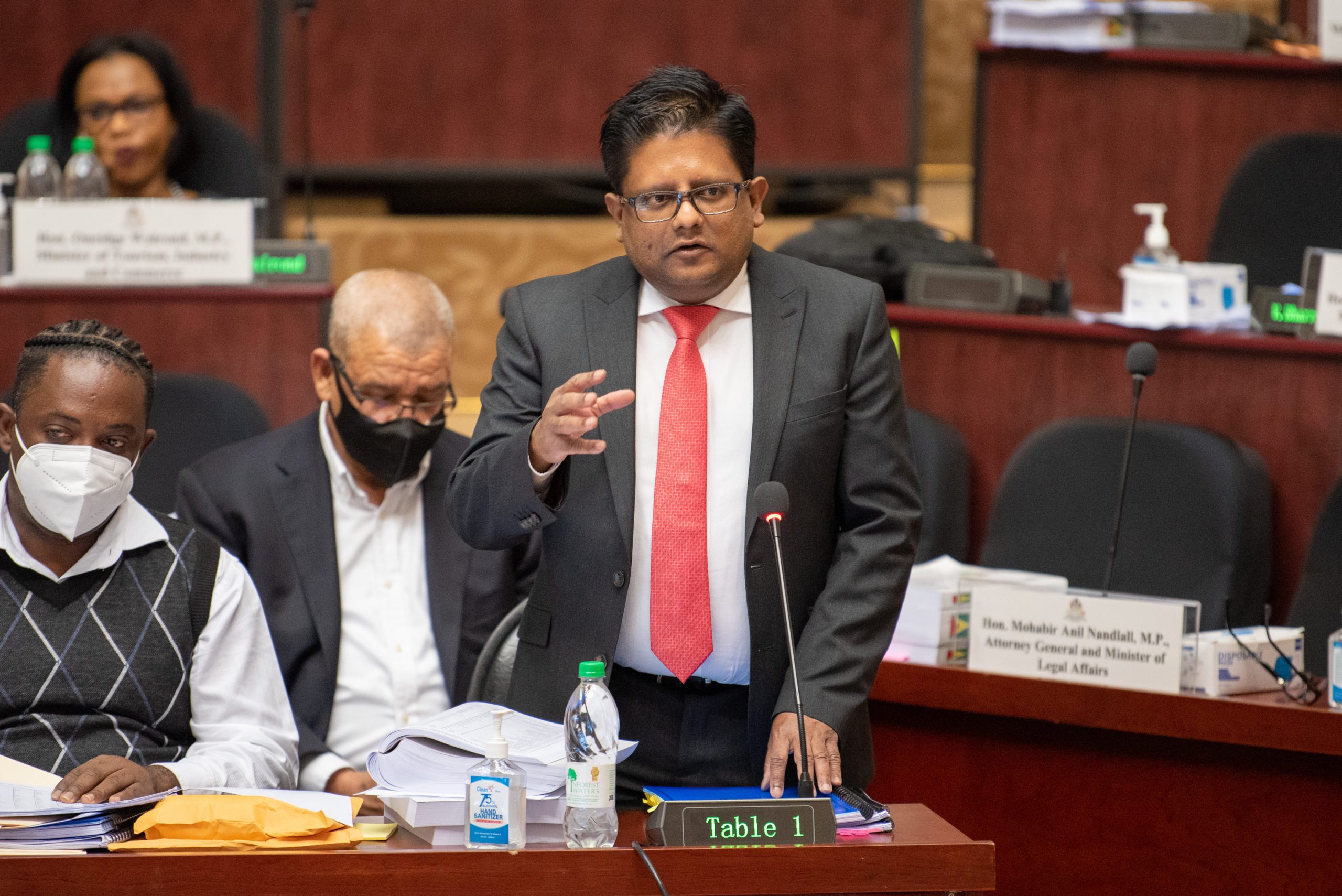After more than seven months of nationwide consultations, the Guyana government tabled its new and expanded Low Carbon Development Strategy (LCDS) 2030 in the National Assembly on Thursday. It was the Senior Minister in the Office of the President with responsibility for Finance, Dr. Ashni Singh, who presented the revised national advancement plan to parliament.
This updated version of the LCDS 2030 incorporates feedback and comments received during the national consultation process. It is expected that the National Assembly will debate the tabling of the LCDS 2030 at its next sitting.
LCDS 2030, an update to the one launched in 2009, by then President Bharrat Jagdeo, presents a vision for Guyana’s development along a low-carbon pathway. It outlines an approach and associated actions to transform Guyana’s development and the livelihoods of its citizens. LCDS 2030 protects Guyana’s forests, biodiversity, watersheds, and advances clean energy, and climate adaptation actions nationally.
This low-carbon strategy also defines the use of Guyana’s natural resources in a sustainable manner to combat the effects of climate change. It outlines too how Guyana can be compensated for the vital contribution the country’s ecosystem services make toward global climate action.
The blueprint supports the development of Guyana’s oil and gas sector, and it seeks to do so by aligning the advancement of this lucrative sector with global climate goals. At the international level, Guyana is supporting a global price on carbon – whether through a global carbon market or a global carbon tax regime.
Some other benefits of Guyana’s low-carbon strategy include fostering the transition to clean energy; sustainable mining and forestry practices; building climate-resilient agriculture systems; protecting against climate change; transforming education, infrastructure and public health systems; stimulating Amerindian development; conserving biodiversity and a host of other advantages.
During the first phase of the LCDS, Guyana sought a bilateral partner who shared the country’s vision and who was willing to partner to create a model for the world. This culminated in the 2009 Guyana-Norway Agreement which, at the time, was the second largest forest agreement of its kind in the world. Norway paid Guyana over US$220 million for forest climate services for the period 2009 to 2015.
These revenues were, and are still being, invested in clean energy, low-carbon jobs, Amerindian land titling, the Amerindian Development Fund project, rehabilitation of the Cunha Canal and other climate resilience work, support for small and medium enterprise development in collaboration with the local banking sector, and many other investments which were set out in the LCDS 2009 and a 2013 update.
Crucially, throughout this period, the Guyana Forestry Commission (GFC) invested heavily in building one of the world’s most advanced forest carbon Monitoring, Reporting and Verification Systems (MRVS).
Now that the strategy has reached its second phase, the government is seeking voluntary markets that are seeking to purchase Guyana’s forest climate services.



